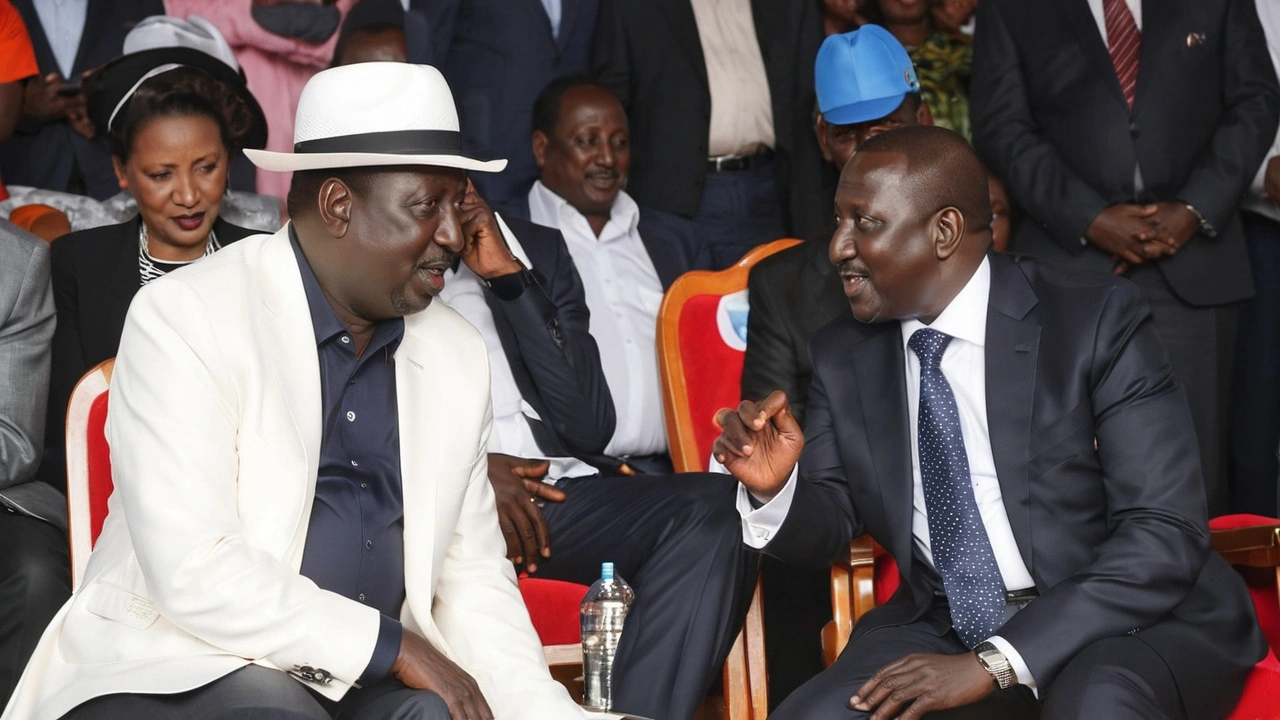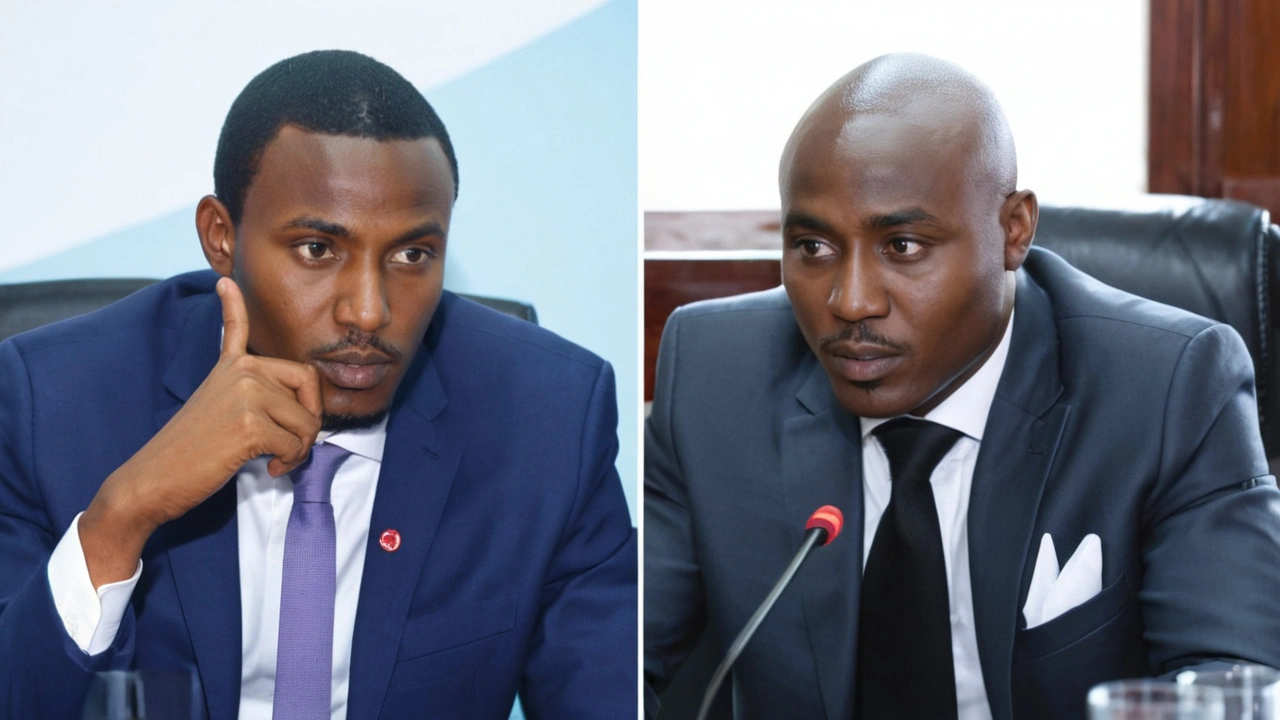Why Raila Odinga and ODM Maintain Mixed Messages in Dealings with President Ruto

Raila Odinga’s Strategic Dance with Ruto’s Administration
The Orange Democratic Movement (ODM), under the venerable leadership of Raila Odinga, finds itself in a delicate balancing act. On one hand, the party asserts vehemently that it has not forged any political alliance with President William Ruto. On the other hand, four ODM members' nominations to Ruto's cabinet suggest a more complex reality. The crux of their approach lies in maintaining autonomy while strategically capitalizing on government positions, a maneuver steeped in political pragmatism.
Individual Choices or Tacit Endorsement?
ODM Secretary-General Edwin Sifuna is firm in his stance. According to him, the four members who accepted nominations to the Kenya Kwanza administration - namely John Mbadi, Opiyo Wandayi, Hassan Joho, and Wycliffe Oparanya - acted on their own accord, without the party's endorsement. Sifuna is unequivocal: any member of ODM who chooses to join the cabinet will be doing so independently and must vacate their positions within the party.
This clear but stern statement aims to delimit personal political ambitions from the collective ethos of ODM. The party is not just concerned with optics; it is a calculated political survival tactic. Holding onto pivotal roles in Parliament like the National Assembly Minority Leader and the Public Accounts Committee (PAC) chairpersonship is vital for ODM’s influence and legislative power.
The Internal Party Rift
One cannot overlook the internal fault lines within ODM and the larger Azimio la Umoja One Kenya Coalition. The party's cautious maneuvering points toward the palpable tension between pragmatism and ideology. Figures like Siaya Governor James Orengo have expressed visceral opposition to ODM aligning with the Ruto administration. Orengo's terminology - 'absolute treachery and an act of political cannibalism' - underscores the ideological chasm within the party.
Orengo's sentiments resonate with a faction within ODM that views any collaboration with Ruto’s regime as a betrayal of the party’s foundational principles. This camp seems to be mostly composed of the younger, more revolutionary members who perceive themselves as vanguards of true opposition politics.
Averting a Split in ODM
Navigating this political minefield necessitates a fine balance. ODM's leadership is acutely aware that overt alliances with the government could lead to a party implosion. The doublespeak, therefore, becomes a mechanism of containing dissent while keeping the doors of governmental influence slightly ajar.
In the larger scheme of Kenyan politics, the survival and unity of ODM are paramount. The stakes have never been higher, especially in a political landscape characterized by shifting allegiances and ephemeral coalitions. Thus, subtle diplomacy and evasive rhetoric become the instruments of maintaining equilibrium within ODM.
Addressing Grassroots Concerns
The ODM's strategy goes beyond mere political posturing. The nation grapples with significant socio-economic issues, prominently the cost-of-living crisis. The youth-led protests are a manifestation of broader discontent, particularly among the younger demographic that forms a crucial part of ODM's support base.
The perception of ODM as a party that is not driven by self-serving politics but is genuinely concerned with the plight of ordinary Kenyans is critical. Sifuna's firm stance that any alliances with Ruto's government are individual pursuits and not party endorsements ties into this broader narrative. It positions ODM as a party unwavering in its commitment to opposition politics and the welfare of Kenyans.
The Bigger Picture: Kenyan Political Dynamics
This situation cannot be understood in isolation. Kenyan politics is in a constant state of flux, characterized by intricate alliances and confrontations. The texture of these political alliances often changes, creating a dynamic and, at times, unpredictable political landscape. Thus, ODM's stance, with its inherent duplicity, is a calculated adaptation to these ever-changing dynamics.
Kenya’s historical political landscape is replete with examples of sudden alliances and abrupt fallouts. These shifts are often motivated by immediate political gains rather than long-term ideological congruence. ODM's current strategy, therefore, fits into a broader tradition of political pragmatism in Kenya.

The Road Ahead
The path ahead for ODM is fraught with challenges, not least of which is maintaining party unity while remaining a powerful political force. The socio-economic issues in Kenya are compounds of local and global pressures, and navigating these while retaining political relevance necessitates a multi-faceted strategy.
In maintaining a stance of non-alignment with Ruto's government while permitting individual members to forge their paths, ODM is engaged in a high-stakes political chess game. The moves are intricate, the stakes enormous, and the outcomes uncertain. The coming months will likely reveal whether this strategy will sustain ODM’s pivotal roles in Parliament and the broader political discourse or if it will precipitate internal ruptures that could redefine the party’s future.
In essence, ODM's doublespeak is more than just political rhetoric; it is a survival strategy in a landscape where political fortunes can shift as swiftly as the winds. As ODM navigates this complex terrain, its ability to adapt while holding onto its core principles will be put to the ultimate test. Amidst the uncertainties, one thing remains clear: in Kenyan politics, agility and adaptation are not just virtues but necessities.